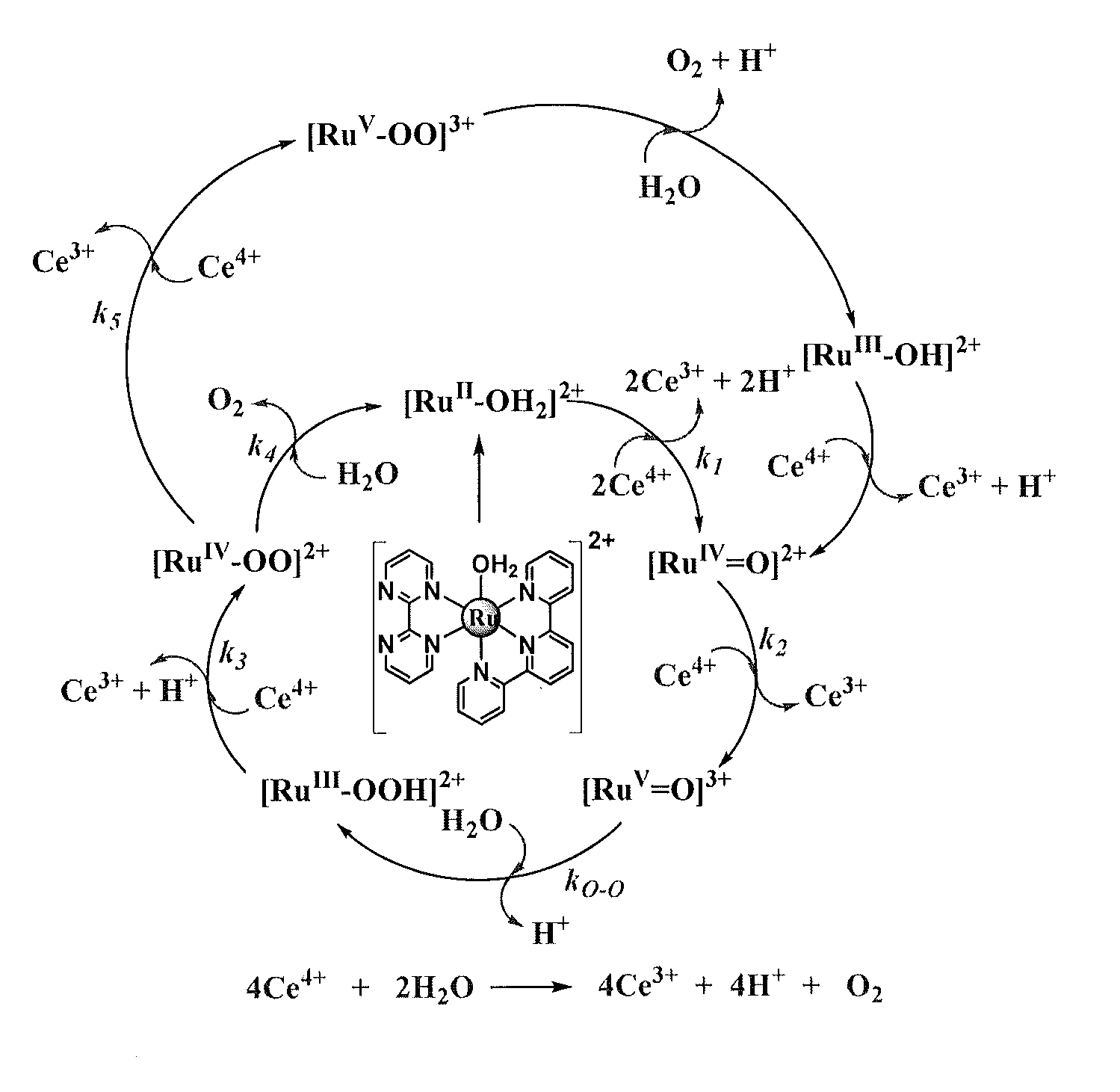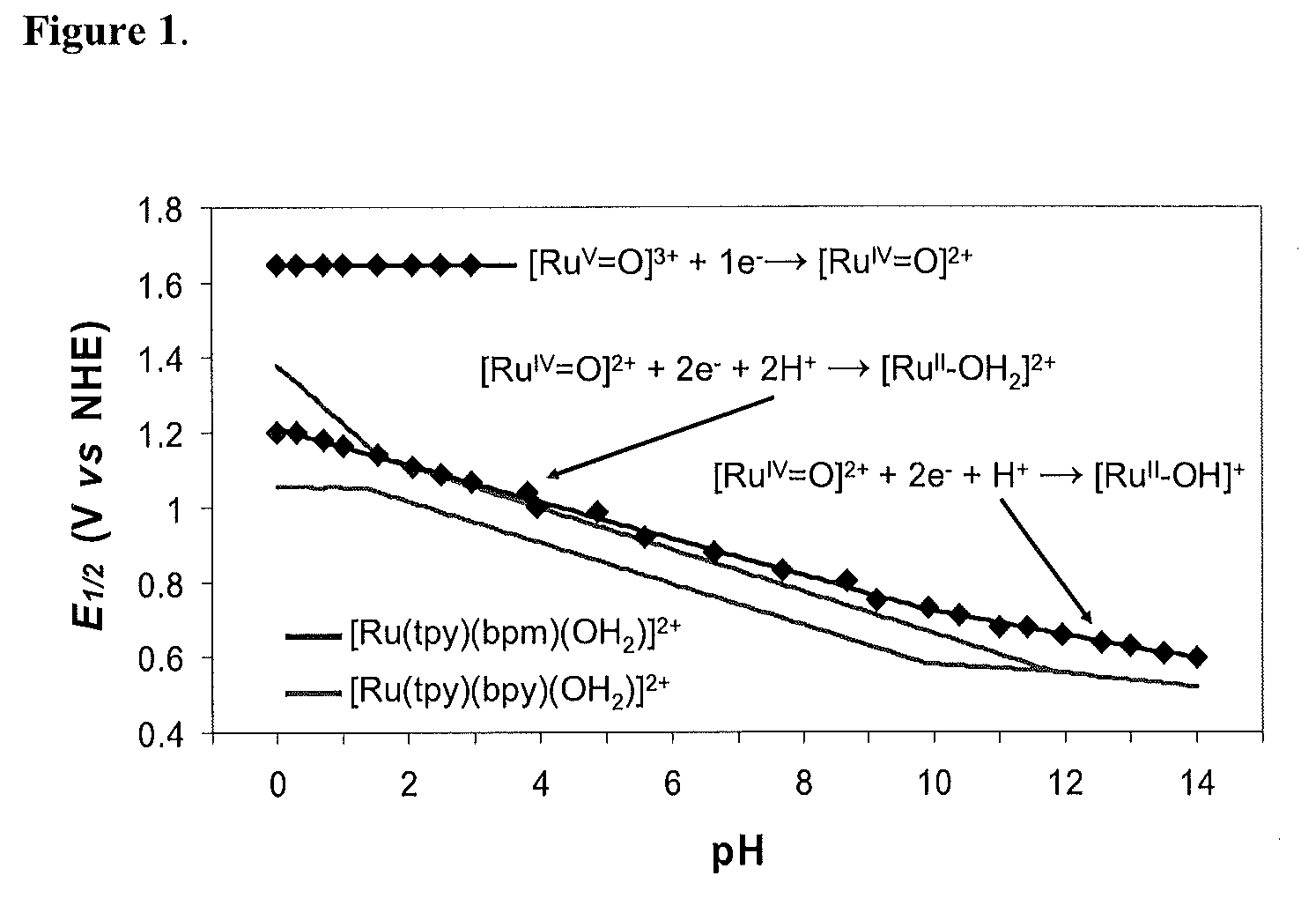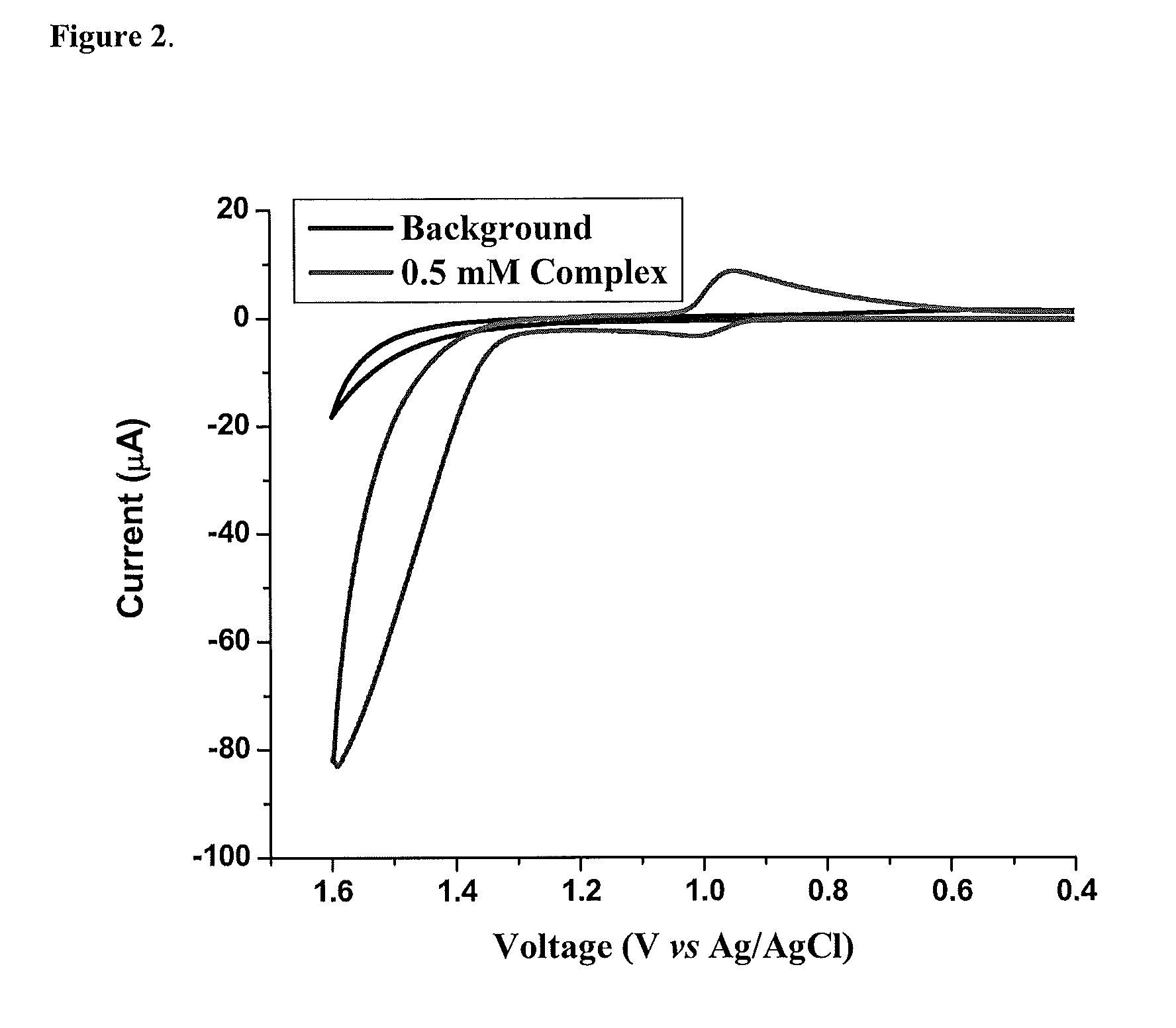Ruthenium or Osmium Complexes and Their Uses as Catalysts for Water Oxidation
a technology of ruthenium or osmium complexes and catalysts, which is applied in the direction of group 3/13 element organic compounds, energy input, group 5/15 element organic compounds, etc., can solve the problems of limited scope and ability of catalysts to harness photochemical reactions, high cost, and high energy consumption
- Summary
- Abstract
- Description
- Claims
- Application Information
AI Technical Summary
Benefits of technology
Problems solved by technology
Method used
Image
Examples
example 1
[0112]Reaction of [Ru(tpy)(C2O4)(OH2)] with bpz or bpm in 0.1 M HClO4 or of [Ru(tpy)(L)(Cl)]+ (L is bpm or bpz) with AgNO3 in 1:1 H2O / MeOH yields the corresponding aqua complexes [Ru-(tpy)(bpz)(OH2)]2+ and [Ru(tpy)(bpm)(OH2)]2+.
[0113][Ru(tpy)(bpz)(OH2)]2+ and [Ru(tpy)(bpm)(OH2)]2+ may be prepared according to methods discussed in the Concepcion et al., J. Am. Chem. Soc., 2008, 130 (49), 16462-16463.
example 2
[0114]The preparation of 1 [Ru(Mebimpy)(bpy)(OH2)]2+ (Mebimpy is 2,6-bis(1-methylbenzimidazol-2-yl)pyridine) and [Ru(Mebimpy)(4,4′-((HO)2OPCH2)2bpy)(OH2)]2+ (1-PO3H2) is illustrated below. Ru(Mebimpy)Cl3 is allowed to react with bpy or 4,4′-((EtO)2OPCH2)2 bpy in 2:1 EtOH:H2O in the presence of NEt3 giving [Ru(Mebimpy)(L)(Cl)]+ (L is bpy or 4,4′-((EtO)2OPCH2 bpy). The chloride ligand was subsequently displaced by the more labile triflate anion in neat triflic acid. Upon addition of water, rapid aquation occurs and the resulting aqua complex was isolated as the triflate salt by addition of excess lithium triflate. For the phosphonate ester precursor of 1-PO3H2, L=4,4′-((EtO)2OPCH2)2 bpy, the ester groups were hydrolyzed by heating the complex in 4.0 M aqueous HCl at 100° C. for 4 days prior to replacement of the chloride ligand.
example 3
[0115]As shown in FIG. 1, the bpm complex shares with [Ru(tpy)(bpy)(OH2)]2+ multiple, pH-dependent oxidations in aqueous solutions. For [Ru(tpy)(bpy)(OH2)]2+, pH dependent RuIII / RuII and RuIV / RuIII couples appear separated by 92 mV over a broad pH range characteristic of closely spaced Ru(III / II) and Ru(IV / III) couples. The small potential separation between couples is a consequence of “redox potential leveling” and the PCET nature of the couple. Protons are lost with no build up of charge between couples, and higher oxidation state Ru(IV) is stabilized by RudO bond formation. There is no evidence for further oxidation of this complex to the solvent limit at ˜1.8 V, and this complex is not a catalyst for water oxidation.
[0116]For [Ru(tpy)(bpm)(OH2)]2+, RuIII is a “missing” oxidation state. A single 2e− RuIV / RuII wave, as shown by peak current comparisons with the [Ru(bpy)3]3+ / 2+ couple, is observed from pH=0 to pH=14 with a change from the [RuIV═O]2++2e−+2H+→[RuII—OH2]2+ couple to [...
PUM
 Login to View More
Login to View More Abstract
Description
Claims
Application Information
 Login to View More
Login to View More - R&D
- Intellectual Property
- Life Sciences
- Materials
- Tech Scout
- Unparalleled Data Quality
- Higher Quality Content
- 60% Fewer Hallucinations
Browse by: Latest US Patents, China's latest patents, Technical Efficacy Thesaurus, Application Domain, Technology Topic, Popular Technical Reports.
© 2025 PatSnap. All rights reserved.Legal|Privacy policy|Modern Slavery Act Transparency Statement|Sitemap|About US| Contact US: help@patsnap.com



